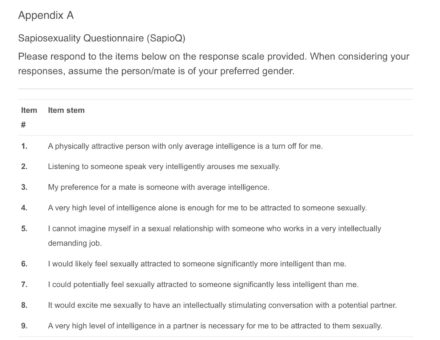Source of article The Jury Room - Keene Trial Consulting.
 The last time we talked about an emerging demographic group, it was the lumbersexual
The last time we talked about an emerging demographic group, it was the lumbersexual
So what is a sapiosexual? According to the Urban Dictionary (knowledge cornerstone for all things hipster) a sapiosexual is:
“One who finds the content’s of someone else’s mind to be their most attractive attribute, above and before their physical characteristics. From the Latin root “sapien”, meaning wise. The term is now becoming mainstream with dating apps such as OkCupid and Sapio giving users the ability to define their sexual orientations as “Sapiosexual.”
For many, defining oneself as Sapiosexual is also a statement against the current status quo of hookup culture and superficiality, where looks are prized above all else.”
So—this isn’t a particular look visible to the eye whilst visually scanning your panel of prospective jurors. It is more about what one is drawn to and what a particular individual says they find attractive in a potential partner. In fact—there is an entire dating app where people are “matched by intelligence” for those who describe themselves as “sapios”.
Like many emerging demographic groups, the sapiosexuals are subject to ridicule and criticism. Some see it as pretentious, non-existent, or even as a facade adopted by those who wish to be seen a certain way (i.e., smart, smug, and superior). A 20-something who may be one of my children looked over my shoulder at this article and pointed to the illustration: “Yes [eye-roll]. That is precisely what anyone who calls themselves a sapiosexual looks like.”
Fortunately, there are always academics looking for tenure and so there actually is a study on sapiosexuality as a defining feature in partner choice. As it turned out, intelligence was not really a factor in determining whether research participants found a potential romantic partner attractive. At least, not usually.
There were a small group of people (8%) for whom intellect created a burning desire for the potential dating partner—unless the person’s IQ was above 120 which was too high for them to be considered desirable by even the sapiosexuals.
Before you ask, no—there are no photos of these sapiosexuals so we cannot know if they all look exactly like the person illustrating this research summary. What is intriguing is that those who found intelligent others attractive—were not necessarily intellectual giants themselves. [Which has to be horrifying for the truly intelligent sapiosexual signing up for a dating site assuming they will be matched with intellectual equals.] Fortunately for all of us, the researchers developed a scale to measure Sapiosexuality. You will wish (perhaps) you were in school again when you realize the researchers made up these questions with a group of students helping to generate this measure of sapiosexuality.
So. Is there another way [besides this strange scale that would never be admissible] to know if someone is a sapiosexual and more importantly, does it matter in the day-to-day practice of litigation advocacy?
Not really. It may be interesting but it probably doesn’t matter since we have only one study on a sample of about 500 people and we aren’t even sure sapiosexuality exists. What is a good thing to know as you are selecting a jury is whether someone is intelligent themselves (rather than simply attracted to those who are intelligent).
And to roughly estimate intelligence, you don’t just look at formal education. Look for people in creative professions, those who seem to be employed or in professional occupations above their level of formal education, those who work in high-tech areas (even in high-tech sales if they come from a technical background), and other characteristics as well. You may want to review our other blog posts on how to “see smart in voir dire” for additional ideas.
Gilles E.Gignac, JoeyDarbyshire, MichelleOoi (2018). Some people are attracted sexually to intelligence: A psychometric evaluation of sapiosexuality. Intelligence, 66, 98-111.


